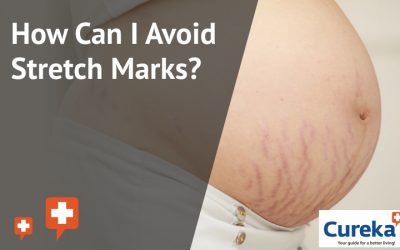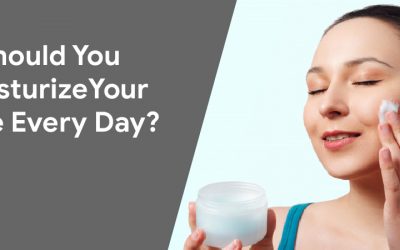Managing Oily Skin: Prevent Acne Before It Starts With the Right Cleanser
Acne vulgaris, a persistent skin condition affecting millions, is most commonly triggered by clogged pores filled with excess sebum and dead skin cells. For individuals with oily skin, managing acne becomes a daily battle. But here’s what most people get wrong, cleansing is not about scrubbing your skin dry, but about choosing the right kind of cleanser to maintain skin barrier health while keeping oil in check.
Let’s break down the science behind face washes for oily skin , and what makes one cleanser better than another.
Why Cleansing Alone Isn’t Enough—But Still Essential
Physicians agree: cleansing alone may not treat acne, but it’s foundational in preventing it. However, many cleansers in the market, especially bar soaps, are harsh, alkaline, and loaded with irritants like dyes and perfumes. These trigger:
- Disruption of the skin’s lipid barrier
- Dryness that prompts compensatory oil production
- Inflammation that worsens acne lesions
A study on a facial cleanser for oily skin showed that a well-formulated cleanser (used with no other acne treatments for two weeks) maintained skin hydration, preserved the skin barrier, and helped reduce acne symptoms without rebound oiliness. The key? The type of cleanser used.
Cleanser Types: What Works and What Doesn’t
1.Soaps (Alkaline Cleansers)
Traditional soaps are made of long-chain fatty acid salts with a high pH (9–10).
Problems: These disrupt the skin’s natural pH (4.5–6), causing dryness, irritation, and tightness after washing.
Variants:
- Superfatted soaps: Include lipids to reduce drying, but not ideal for oily skin.
- Glycerin soaps: Add humectants but still maintain a high pH.
- Antibacterial soaps: Often contain triclosan, which may irritate or dry out skin further.
Verdict: Not recommended for oily skin or acne management due to harshness and pH imbalance.
2.Syndet Bars (Synthetic Detergents)
These are made from non-soap surfactants such as sulfosuccinates or fatty acid isothionates.
pH : Slightly acidic to neutral, closer to skin’s natural pH.
Advantages:
- Low irritancy
- No soap scum
- Better preservation of skin lipids and proteins
Moisturizing effect: Higher free fatty acid content aids hydration.
Verdict: Best face wash for oily skin in bar format. Gentle yet effective for deep pore cleansing.
3.Combars
These are hybrid bars that combine alkaline soap with synthetic surfactants.
pH: 9–10 (still alkaline)
Cleansing strength: Stronger than syndets but less gentle.
Risk: Can still irritate sensitive or oily skin due to high pH.
Verdict: Moderately effective, but not ideal for oily, acne-prone skin.
4.Lipid-Free Cleansing Lotions
These use fatty alcohols and emulsifiers, often without surfactants.
- Usage: Wipe-off or rinse-off options
- Best for: Dry or sensitive skin
- Less effective at removing excess oil or deep pore impurities
Verdict: Not suitable for oily skin due to insufficient cleansing power.
5.Liquid Face Washes and Body Washes
These contain milder surfactants (e.g., cocamidopropyl betaine) and often include humectants and emollients.
- Sensation: More comfortable, hygienic, and luxurious.
- Formulation: Can be tailored for oily skin with ingredients like salicylic acid, tea tree oil, or zinc.
- Preserve hydration: Good for long-term skin health.
Verdict: Highly recommended for oily skin—look for oil-free, non-comedogenic formulas.
6.Cold Cream Cleansers
Made from lipid solvents (e.g., mineral oil) and detergents (e.g., borax).
- Heavy and occlusive
- Ideal for makeup removal and very dry skin
- Too greasy for oily or acne-prone skin types
Verdict: Avoid if you have oily skin.
Factors That Affect Cleanser Tolerance in Oily Skin
1.Surfactants Matter
Surfactants bind to keratin and can denature proteins, damaging the skin’s structure. Anionic surfactants (e.g., sodium lauryl sulfate) are most irritating. Shorter chain lengths (C8–C12) increase this risk. Look for:
- Nonionic surfactants
- Mild anionics in combination with polymers or humectants (e.g., propylene glycol)
2.Rinsability (Residue Factor)
Residual cleansers can increase irritation, especially when left on the skin. Products that rinse off completely reduce the risk of delayed irritation.
3.pH of the Cleanser
While some debate exists, many dermatologists still recommend keeping facial cleansers within pH 4–6.5 to:
- Maintain skin microbiome balance
- Avoid disruption of the stratum corneum
- Minimize acne-causing bacteria proliferation
Best Ingredients for Oily Skin: What to Look for in a Cleanser
While the texture and pH of a cleanser are crucial, active ingredients play a key role in regulating sebum production and preventing clogged pores. Here are some of the best ingredients backed by dermatological studies:
1.Niacinamide (Vitamin B3)
Mechanism: Reduces sebaceous gland activity and improves skin texture.
Benefits:
- Regulates oil production
- Minimizes pore size
- Soothes inflammation
Efficacy : A 2% topical niacinamide gel has been shown to reduce sebum levels significantly over 4–6 weeks.
Ideal for oily, acne-prone, and sensitive skin.
2.L-Carnitine
Mechanism: Enhances fatty acid metabolism in sebocytes, reducing lipid accumulation.
Benefits:
- Decreases surface oiliness
- Lightweight, non-comedogenic formulation
Efficacy : Shown to reduce sebum secretion when used topically in concentrations of 2–4%.
Excellent for oily skin types looking for lightweight formulations.
3.Green Tea Extract (Camellia sinensis)
Mechanism : Contains epigallocatechin gallate (EGCG), which has anti-inflammatory and sebum-reducing properties.
Benefits:
- Antioxidant and antimicrobial
- Controls sebum without drying skin
Efficacy: Topical use has been shown to reduce acne lesions and sebaceous gland size.
Good option for those preferring botanical or gentle cleansers.
4.Salicylic Acid (BHA)
Mechanism : Oil-soluble exfoliant that penetrates pores to dissolve excess sebum and keratin plugs.
Benefits:
- Clears blackheads and whiteheads
- Unclogs pores effectively
Efficacy : Found in many cleansers for oily skin; best used at 0.5–2%.
Go-to ingredient for oily, acne-prone skin.
5.Zinc PCA
Mechanism: Combines zinc with PCA (a component of the skin’s natural moisturizing factor) to regulate sebum.
Benefits:
- Antibacterial and anti-inflammatory
- Reduces sebum excretion
Efficacy: Proven to suppress 5-alpha reductase activity (an enzyme linked to oil production).
Ideal for oily skin with enlarged pores and redness.
6.Olumacostat Glasaretil (Newer Topical Agent)
Mechanism: Inhibits acetyl coenzyme-A carboxylase, reducing lipid synthesis in sebocytes.
Benefits:
- Targets oil production at the cellular level
- Promising results in clinical trials
Efficacy: Still under evaluation, but early studies show meaningful reductions in oiliness and acne lesions.
Emerging ingredient—watch for it in next-gen oily skin formulations.
Where Does Benzoyl Peroxide Fit in Oily Skin Management?
While many actives like niacinamide, L-carnitine, and olumacostat glasaretil target sebum production or inflammation, benzoyl peroxide (BPO) stands out for its potent antibacterial and comedolytic properties. It works by reducing Cutibacterium acnes (formerly Propionibacterium acnes) , the bacteria involved in acne development, and by helping to clear blocked pores, making it a great option for those with both oily skin and active breakouts.
Why it matters:
- Dual action: Fights bacteria and unclogs pores
- Oil-compatible: Works well on oily skin types
- Fast-acting: Can reduce acne lesions within days
- Often combined: Frequently paired with topical retinoids for synergistic effects
However, BPO can be drying or irritating for some users, so it’s often best used in lower concentrations (2.5%–5%) in cleansers or spot treatments to reduce side effects. Pairing it with a gentle, non-comedogenic cleanser for oily skin can balance its potency while protecting the skin barrier.
Lets now have a Quick comparison:
| Ingredient | Primary Action | Best For | Common Forms | Cautions |
| Benzoyl Peroxide | Antibacterial, comedolytic | Inflammatory acne, oily skin with breakouts | Cleansers, gels (2.5%–5%) | May cause dryness, irritation |
| Niacinamide (Vitamin B3) | Sebum regulation, anti-inflammatory | Oily skin, large pores, redness | Serums, creams (2%–10%) | Generally well-tolerated |
| Salicylic Acid (BHA) | Exfoliates inside pores, keratolytic | Blackheads, oily congested skin | Cleansers, toners (0.5%–2%) | Can cause peeling if overused |
| L-Carnitine | Reduces sebocyte activity | Mild to moderate oily skin | Serums, moisturizers | Safe and gentle |
| Green Tea Extract (EGCG) | Anti-inflammatory, antioxidant | Sensitive, oily skin; redness-prone skin | Gels, lotions, toners | Safe, but check for allergies |
| Topical Retinoids (e.g., Adapalene) | Regulate cell turnover, reduce oil | Acne, comedones, anti-aging | Gels, creams | Can cause purging, dryness initially |
| Olumacostat Glasaretil | Sebum-suppressing (experimental) | Research setting, advanced oily skin management | Not widely available commercially | Still under study |
A Word on Medications and Advanced Treatments
While cleansers play a vital role, sometimes medical and procedural treatments are required for severe seborrhea or acne:
- Topical retinoids: Normalize keratinization and reduce pore blockages
- Oral isotretinoin: Reduces sebaceous gland size and sebum output
- Spironolactone and oral contraceptives: Hormonal therapy for women
- Botulinum toxin: Experimental, but may reduce sebum via local injections
- Photodynamic therapy and lasers: Target sebaceous glands selectively
To quickly tell you : Cleansing is the first step, but managing oily skin often requires a combination of topical and systemic support under dermatologic guidance.
Pro Tip:
For oily skin that breaks out easily, a cleanser with salicylic acid followed by a niacinamide-based moisturizer works well. Add benzoyl peroxide as a spot treatment or in a short-contact cleanser for maximum effect.
Conclusion :
Managing oily skin isn’t about harsh scrubbing, over-cleansing, or chasing the latest fads. It’s about choosing well-formulated cleansers that align with your skin’s biology. Whether it’s niacinamide, L-carnitine, or green tea extract, effective skincare hinges on ingredients backed by clinical evidence, not marketing hype.
A good cleanser should support your skin barrier, balance oil production, and prepare your skin for the rest of your routine, without over-drying or irritating it. Remember, consistency beats complexity, and even the most effective active ingredients need time and regular use to show results.
References:
- CLEANSERS AND THEIR ROLE IN VARIOUS DERMATOLOGICAL DISORDERS – 2011 Jan – https://pmc.ncbi.nlm.nih.gov/articles/PMC3088928/
- Oily Skin: A review of Treatment Options – 2017 Aug – https://pmc.ncbi.nlm.nih.gov/articles/PMC5605215/
- Investigation of the Chemical Content and User Comments on Facial Cleansing Products – 2023 May – https://pmc.ncbi.nlm.nih.gov/articles/PMC10243403/
- What is the Role of Benzoyl Peroxide Cleansers in Acne Management? – 2008 Nov – https://pmc.ncbi.nlm.nih.gov/articles/PMC3016935/











